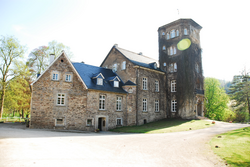Hochsauerlandkreis is a Kreis (district) in the east of North Rhine-Westphalia, Germany. Neighboring districts are Soest, Paderborn, Höxter, Waldeck-Frankenberg, Siegen-Wittgenstein, Olpe, Märkischer Kreis.
Olpe is a Kreis (district) in the south-east of North Rhine-Westphalia, Germany. Neighboring districts are Märkischer Kreis, Hochsauerland, Siegen-Wittgenstein, Altenkirchen, Oberbergischer Kreis.

The Sauerland is a rural, hilly area spreading across most of the south-eastern part of North Rhine-Westphalia, in parts heavily forested and, apart from the major valleys, sparsely inhabited.

Wenden is a municipality in North Rhine-Westphalia, Germany. It belongs to the Olpe district in the Sauerland. It lies 10 kilometres south of Olpe and 20 km (12 mi) northwest of Siegen.
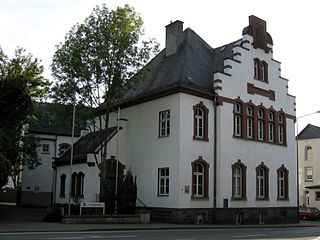
Plettenberg is a town in the Märkischer Kreis, in North Rhine-Westphalia, Germany.

Werdohl is a town in the district Märkischer Kreis, in North Rhine-Westphalia, Germany.

Olsberg is a town in the Hochsauerland district, in North Rhine-Westphalia, Germany.

Schmallenberg is a town and a climatic health resort in the High Sauerland District, Germany. By area, it is the third biggest of all cities and towns of the state of North Rhine-Westphalia and the second biggest of the region of Westphalia.
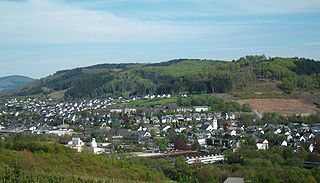
Bestwig is a municipality in the Hochsauerland district, in North Rhine-Westphalia, Germany.
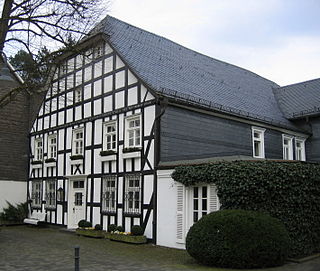
Eslohe is a municipality in the Hochsauerland district, in North Rhine-Westphalia, Germany.

Attendorn is a German town in the Olpe district in North Rhine-Westphalia. As of 2019 it had a population of 24,264.

Lennestadt lies in the Sauerland in southeast North Rhine-Westphalia and is a community in Olpe district. It is the district's most populous municipality. Lennestadt itself is not an actual town but a community which comprises several towns and villages.

Olpe is a town situated in the foothills of the Ebbegebirge in North Rhine-Westphalia, roughly 60 km east of Cologne and 20 km northwest of Siegen. It is part of the Regierungsbezirk of Arnsberg and is the seat of the district of Olpe.

Kirchhundem is a German community in North Rhine-Westphalia. It belongs to the Olpe district.

Bad Berleburg is a town, in the district of Siegen-Wittgenstein, in North Rhine-Westphalia, Germany. It is one of Germany's largest towns by land area. It is located approximately 30 km (19 mi) northeast of Siegen and 35 km (22 mi) northwest of Marburg an der Lahn.
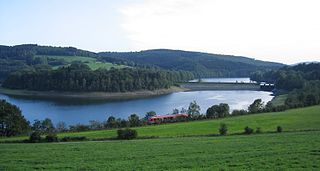
The Biggesee or Bigge Reservoir is a reservoir in Germany. It lies in the southern part of the Sauerland between Olpe and Attendorn.
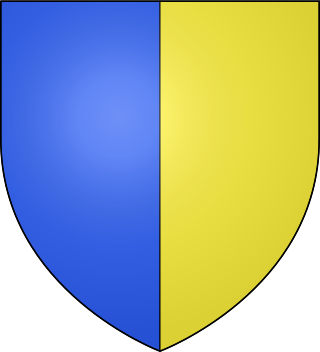
The House of Plettenberg is the name of the Westphalian noble family of the Uradel. It dates back at least to 1187, when Heidolphus de Plettenbrath was mentioned in a document by Philip I. Plettenberg-Wittem branch that ruled immediate Lodships of Meitingen and Sulmingen lost its sovereignty and became mediatised to Württemberg in 1806. This line of the family went extinct in 1813.

The Ruhr–Sieg railway is a 106 km long double-track, electrified main line from Hagen to Siegen via Iserlohn-Letmathe, Finnentrop and Kreuztal in the German state of North Rhine-Westphalia. The line, which has many tunnels, runs primarily through the valley of the Lenne. South of Altenhundem it crosses the watershed between the Lenne and the Sieg. The line was opened between 1859 and 1861 and is one of the oldest railways in Germany.
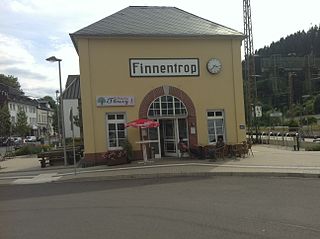
Finnentrop station is a railway junction on the Ruhr–Sieg railway between Hagen and Siegen in the German state of North Rhine-Westphalia. The station is located on the territory of the municipality of Finnentrop in the district of Olpe. The Bigge Valley Railway to Olpe branches off here and it was also the start of the Finnentrop–Wennemen railway, which was closed in 1996. It is classified by Deutsche Bahn as a category 4 station.
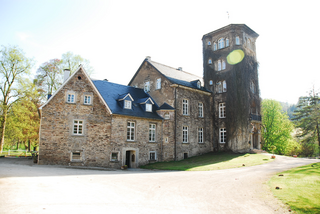
Haus Bamenohl is a castle in the village of Bamenohl, municipality of Finnentrop, Olpe district in North Rhine-Westphalia, Germany.
